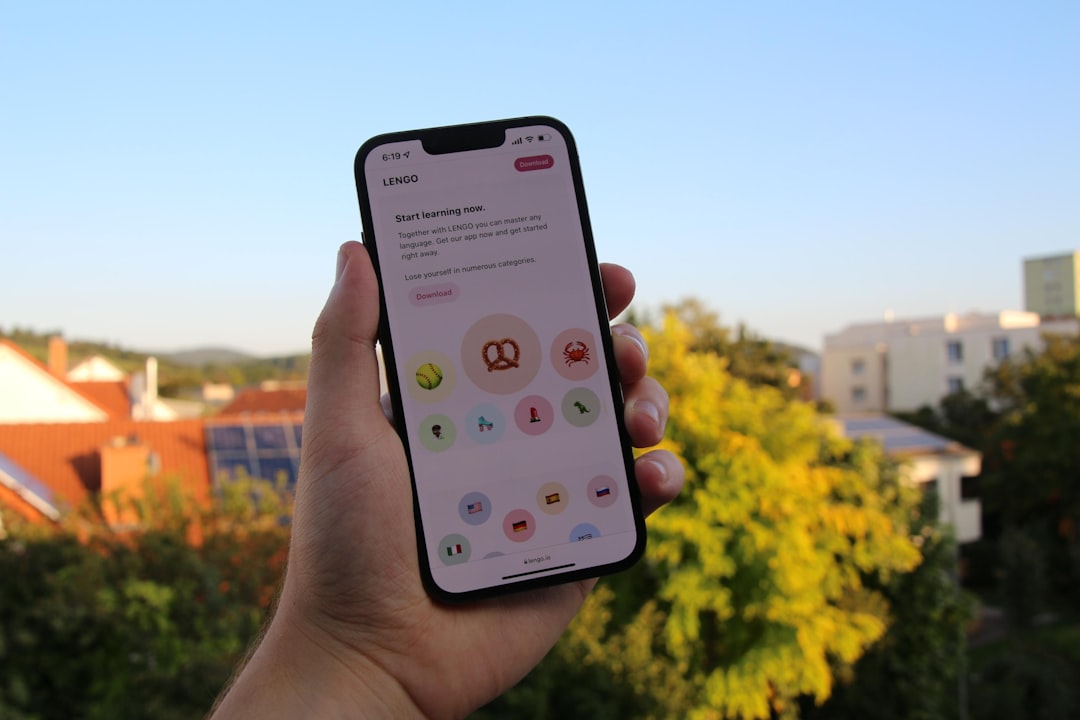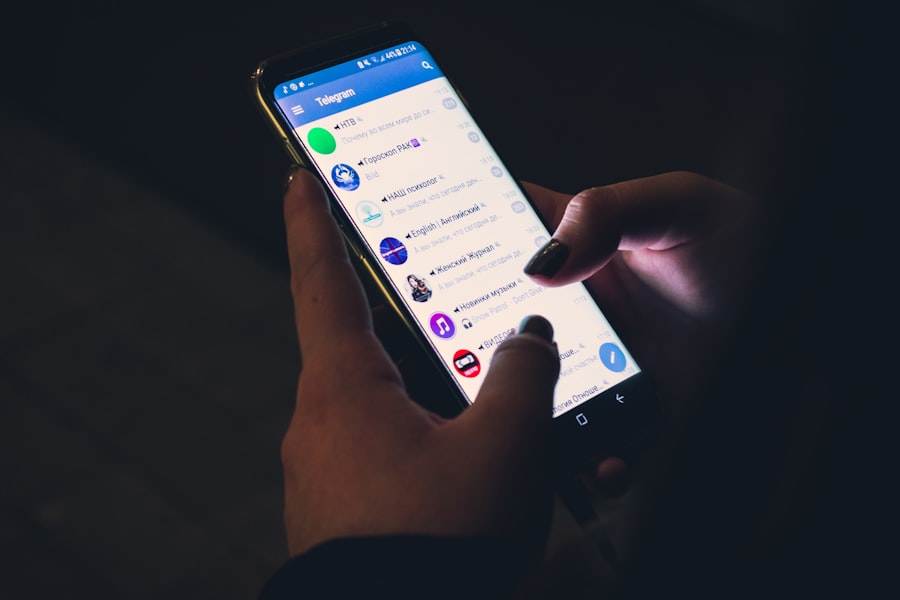
In the digital age, language learning apps have revolutionized the way individuals acquire new languages. These applications, often designed with gamification elements, provide an engaging and interactive platform for learners of all ages. Popular apps like Duolingo, Babbel, and Rosetta Stone offer structured lessons that cover vocabulary, grammar, and pronunciation.
For instance, Duolingo employs a game-like interface where users earn points for correct answers and can compete with friends, making the learning process enjoyable and motivating. The bite-sized lessons are perfect for busy individuals, allowing them to practice on the go, whether during a commute or a lunch break. Moreover, language learning apps often incorporate speech recognition technology to help users improve their pronunciation.
This feature allows learners to receive immediate feedback on their spoken language skills, which is crucial for mastering any new language. For example, Babbel focuses on real-life conversational skills, providing users with dialogues that they might encounter in everyday situations. This practical approach not only enhances vocabulary but also builds confidence in speaking.
Additionally, many apps offer personalized learning paths based on the user’s proficiency level and goals, ensuring that the content remains relevant and challenging.
Key Takeaways
- Language learning apps offer convenient and interactive ways to practice and improve language skills on the go.
- Online language courses provide structured learning materials and often offer flexibility in scheduling and pace of learning.
- Language exchange programs allow learners to practice speaking with native speakers and gain cultural insights.
- Podcasts and audiobooks are great for improving listening comprehension and learning in a more casual, on-the-go manner.
- Language learning websites offer a variety of resources including grammar lessons, vocabulary exercises, and cultural information.
Online Language Courses
Comprehensive Course Structure
Platforms like Coursera, edX, and Udemy provide a vast array of courses taught by experienced instructors from around the world. These courses typically include video lectures, interactive quizzes, and assignments that enable learners to practice their skills in a structured environment.
Personalized Learning Experience
For instance, a beginner Spanish course on Coursera might cover essential grammar rules, vocabulary, and cultural insights through engaging multimedia content. This format caters to various learning styles, making it easier for students to grasp complex concepts.
This aspect is particularly beneficial for practicing speaking skills and receiving constructive feedback. For example, platforms like iTalki connect learners with native speakers for one-on-one tutoring sessions, allowing for personalized instruction tailored to individual needs. The ability to engage in real-time conversations enhances fluency and comprehension, making online courses a valuable resource for serious language learners.
Language Exchange Programs

Language exchange programs offer a unique opportunity for learners to practice their target language with native speakers while helping them learn their own language in return. These programs can take various forms, including in-person meetups or virtual exchanges through platforms like Tandem and HelloTalk. Participants typically engage in conversations where they alternate between languages, allowing both parties to benefit from the exchange.
For instance, a native English speaker looking to learn French might partner with a French speaker wanting to improve their English skills. This reciprocal teaching method fosters cultural exchange and builds friendships across borders. In addition to enhancing language skills, language exchange programs often provide insights into cultural nuances that are not typically covered in traditional language courses.
Engaging with native speakers allows learners to understand idiomatic expressions, slang, and regional dialects that are essential for achieving fluency. Moreover, these programs can help break down barriers and promote understanding between different cultures. By sharing personal experiences and perspectives, participants can develop a deeper appreciation for each other’s backgrounds while honing their language abilities.
Podcasts and Audiobooks
| Category | Podcasts | Audiobooks |
|---|---|---|
| Number of Titles | 1,000,000+ | 200,000+ |
| Genres | Various (e.g. News, Comedy, True Crime) | Fiction and Non-Fiction |
| Listening Time | Flexible | Fixed (based on book length) |
| Platform Availability | Multiple (e.g. Spotify, Apple Podcasts) | Various (e.g. Audible, Google Play Books) |
Podcasts and audiobooks have emerged as powerful tools for language learners seeking to improve their listening skills and comprehension. With a plethora of options available across various genres and languages, learners can immerse themselves in authentic content that reflects real-world usage of the language. For example, podcasts like “Coffee Break Spanish” or “Pimsleur” offer lessons that cater to different proficiency levels while incorporating cultural insights and practical vocabulary.
The conversational format of podcasts makes them an excellent resource for developing listening skills in a natural context. Audiobooks also play a significant role in language acquisition by providing exposure to narrative structures and vocabulary in context. Listening to stories read by native speakers helps learners internalize pronunciation and intonation patterns.
For instance, an English learner might listen to classic literature or contemporary novels in audiobook format, allowing them to enjoy the story while simultaneously improving their language skills. Many platforms, such as Audible or LibriVox, offer a wide selection of audiobooks in various languages, making it easy for learners to find material that interests them.
Language Learning Websites
The internet is replete with language learning websites that cater to diverse learning preferences and goals. Websites like Memrise and FluentU utilize multimedia resources to enhance vocabulary acquisition and comprehension skills. Memrise employs spaced repetition techniques to help learners retain new words effectively by revisiting them at optimal intervals.
This method is particularly useful for memorizing vocabulary in a systematic way, ensuring that learners can recall words when needed. FluentU takes a different approach by using real-world videos—such as movie trailers, music videos, and interviews—to teach languages in context. By exposing learners to authentic content, FluentU helps them understand how the language is used in everyday situations.
The interactive captions allow users to click on words for definitions and example sentences, facilitating deeper learning. Additionally, many language learning websites offer forums or community features where learners can connect with others studying the same language, fostering a sense of camaraderie and support.
Language Learning Books

Comprehensive Language Learning
Textbooks such as “Assimil” or “Teach Yourself” often include audio components that accompany the text, allowing learners to practice listening and pronunciation alongside their reading. For example, “Assimil” employs a unique method that emphasizes intuitive learning through dialogues followed by explanations of grammar points.
Reference Books for Language Learning
In addition to textbooks, there are numerous reference books available that focus on specific aspects of language learning. Grammar guides like “English Grammar in Use” by Raymond Murphy or vocabulary builders such as “Word Power Made Easy” by Norman Lewis serve as excellent supplementary materials for learners seeking to deepen their understanding of the language structure or expand their lexicon.
Immersive Reading Experiences
Furthermore, literature in the target language—ranging from children’s books to classic novels—can provide immersive reading experiences that enhance comprehension and cultural awareness.
Language Immersion Programs
Language immersion programs offer an unparalleled opportunity for learners to fully engage with a new language in its cultural context. These programs typically involve traveling to a country where the target language is spoken and participating in intensive courses alongside local speakers. For instance, a student enrolled in an immersion program in Spain might attend daily classes while living with a host family who speaks Spanish exclusively at home.
This environment forces learners to practice their language skills continuously, accelerating their proficiency. Moreover, immersion programs often include cultural activities such as cooking classes, guided tours, or local events that further enrich the learning experience. By participating in these activities, learners gain practical language skills while also developing an appreciation for the culture associated with the language they are studying.
Research has shown that immersion can significantly enhance fluency compared to traditional classroom settings because it encourages learners to use the language actively rather than passively absorbing information.
Language Learning Communities
Language learning communities play a crucial role in supporting individuals on their language acquisition journeys. Online platforms such as Reddit’s r/languagelearning or Facebook groups dedicated to specific languages provide spaces where learners can share resources, ask questions, and seek advice from fellow enthusiasts.
In-person meetups organized through platforms like Meetup.com or local cultural centers also contribute to building supportive networks for language learners. These gatherings allow individuals to practice speaking in a relaxed environment while making new friends who share their passion for languages. Engaging with others who are also learning can alleviate feelings of isolation and encourage consistent practice.
Additionally, many communities host events such as language cafes or conversation clubs where participants can engage in informal discussions while honing their skills in a friendly atmosphere. Through these various avenues—apps, online courses, exchange programs, podcasts, websites, books, immersion experiences, and community support—language learners have access to an extensive array of resources that cater to diverse needs and preferences. Each method offers unique benefits that can enhance the overall learning experience and contribute significantly to achieving fluency in a new language.
If you are looking for more language learning resources, you may be interested in an article on conversation topics related to shopping. This article provides vocabulary and phrases that can be useful when discussing shopping experiences in a foreign language. You can check it out here.
FAQs
What are language learning resources?
Language learning resources are tools, materials, and methods that individuals use to learn and improve their proficiency in a foreign language. These resources can include textbooks, online courses, language learning apps, language exchange programs, and immersion experiences.
What are some popular language learning resources?
Some popular language learning resources include Duolingo, Rosetta Stone, Babbel, Pimsleur, FluentU, iTalki, and Memrise. Additionally, textbooks, language exchange meetups, and immersion programs are also commonly used resources for language learning.
How can language learning resources help in language acquisition?
Language learning resources can help in language acquisition by providing structured lessons, vocabulary practice, grammar explanations, and opportunities for speaking and listening practice. These resources can also offer cultural insights and real-life language usage, which are essential for language acquisition.
Are language learning resources effective for all language learners?
The effectiveness of language learning resources can vary depending on individual learning styles, goals, and preferences. Some learners may find certain resources more effective than others, so it’s important to explore different options to find the best fit for one’s own learning needs.
Can language learning resources replace traditional language classes?
While language learning resources can be effective in helping individuals learn a language, they may not fully replace the benefits of traditional language classes, especially in terms of structured curriculum, teacher guidance, and opportunities for in-person interaction. However, language learning resources can be a valuable supplement to traditional classes or a primary learning method for self-directed learners.



